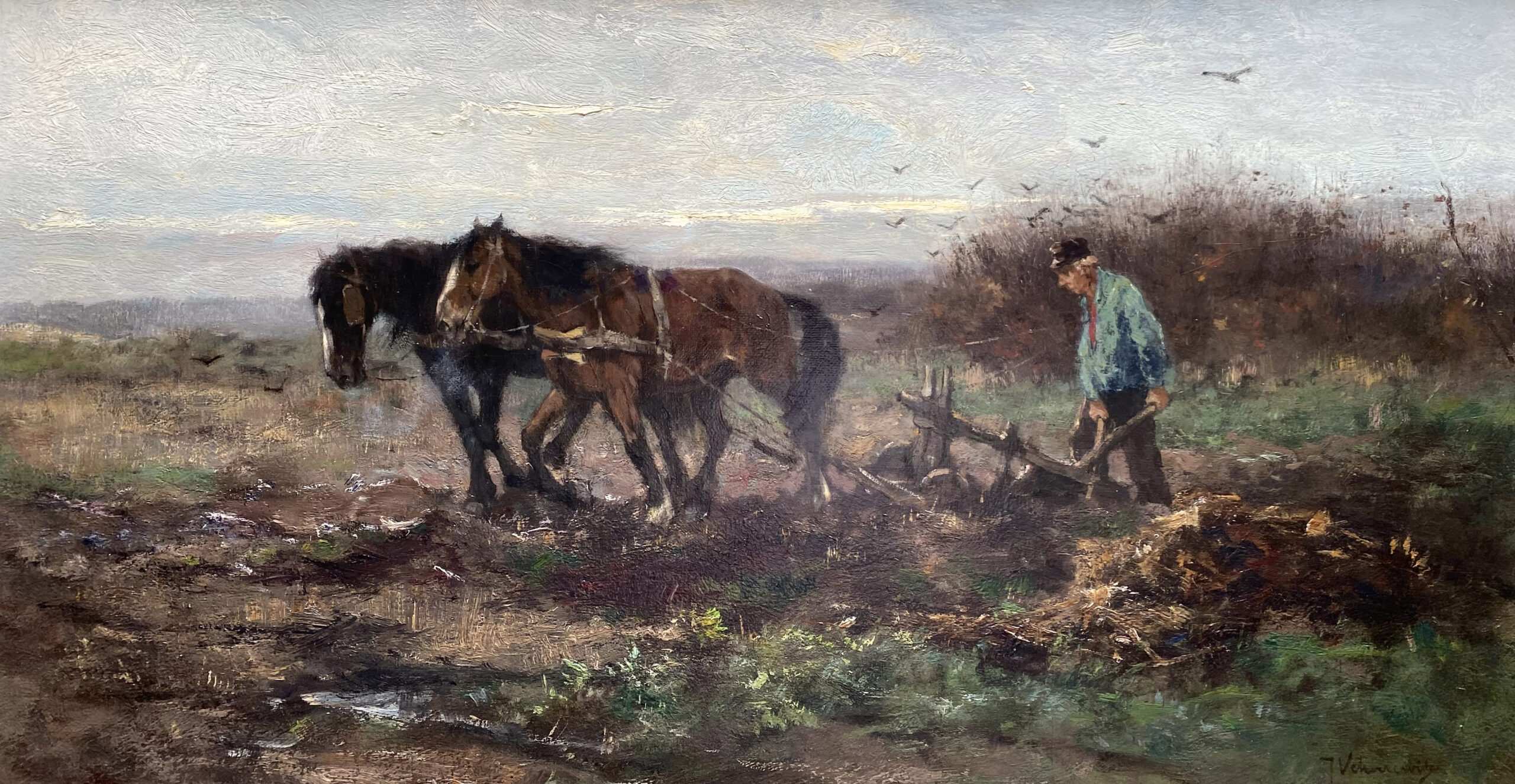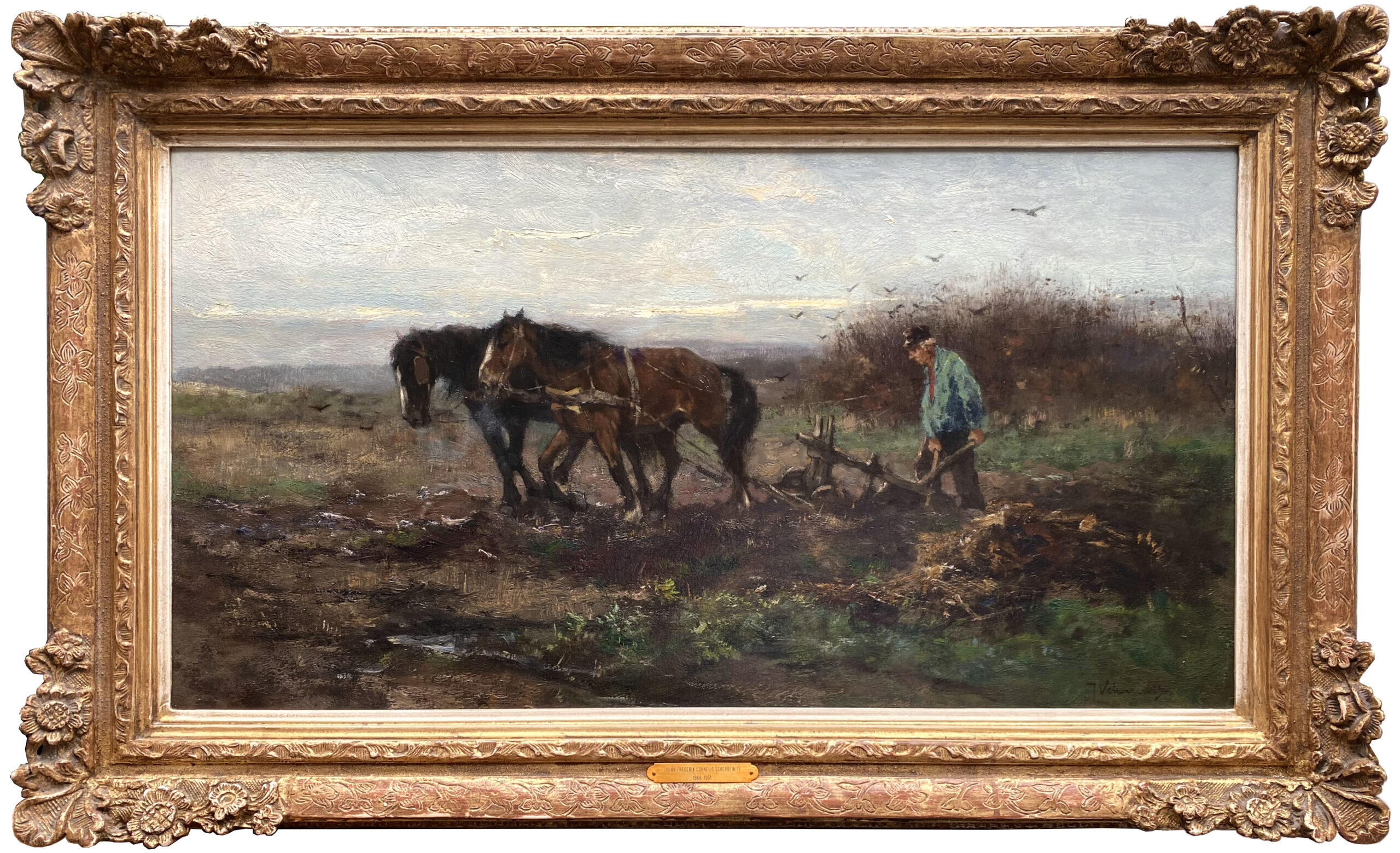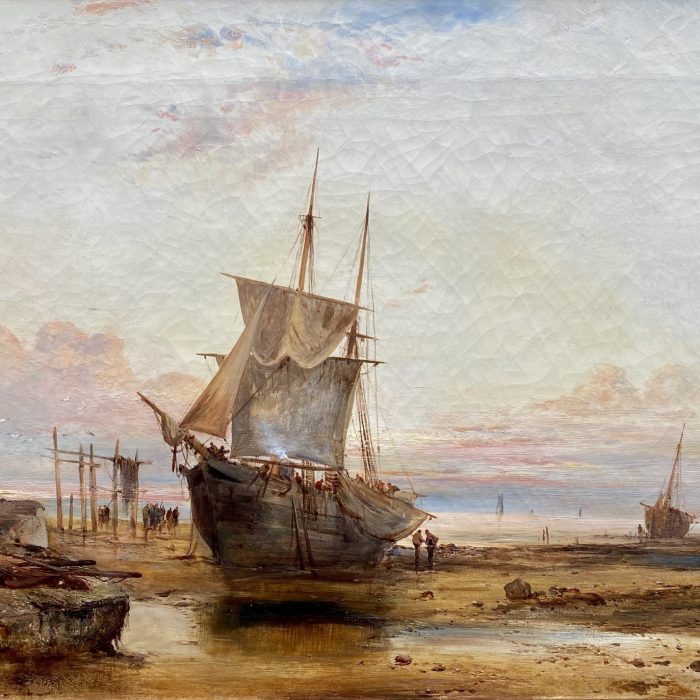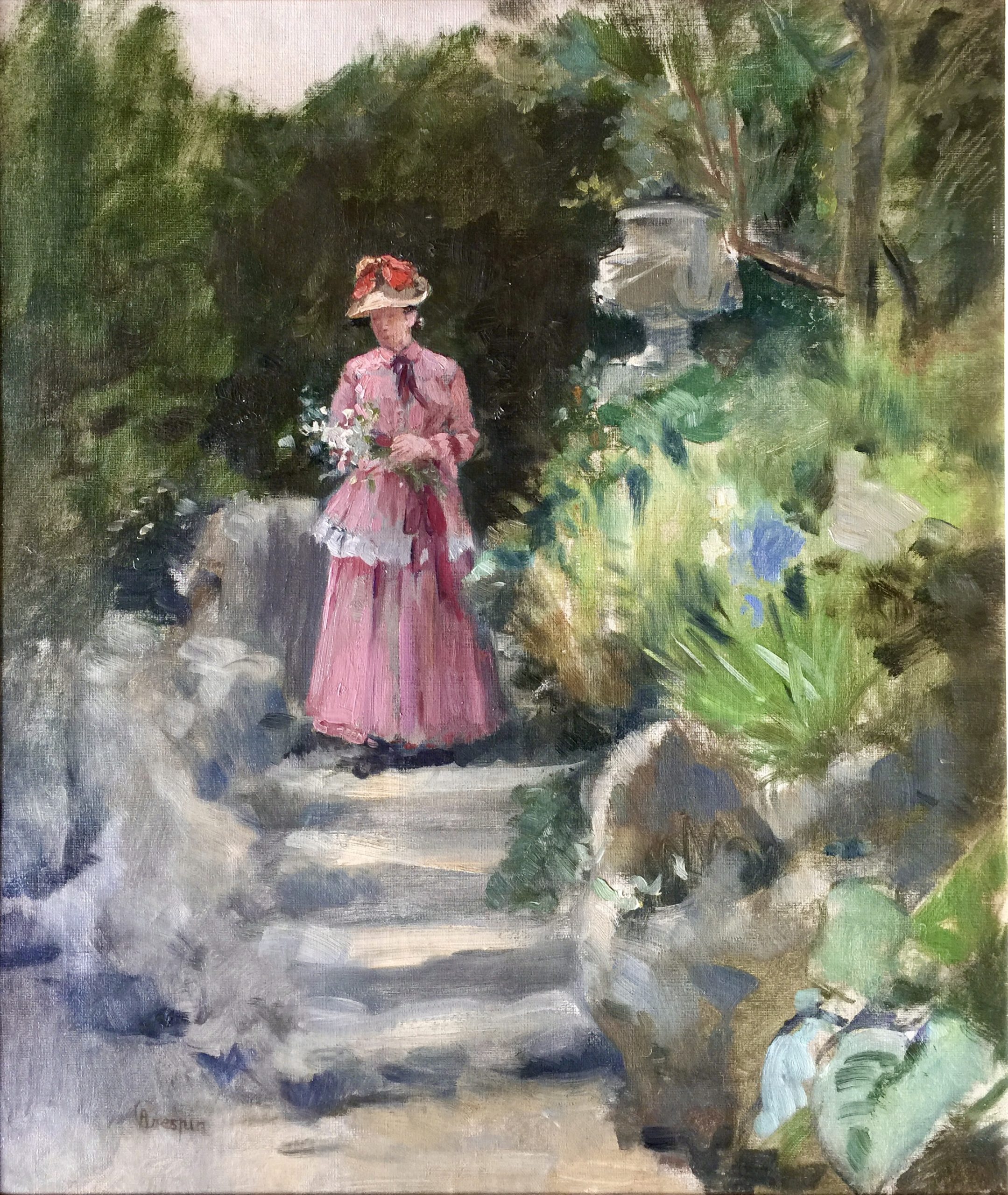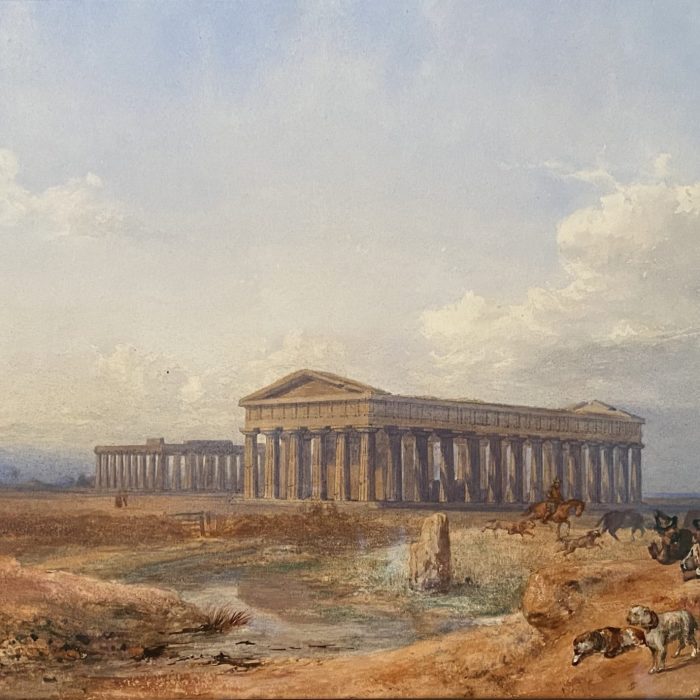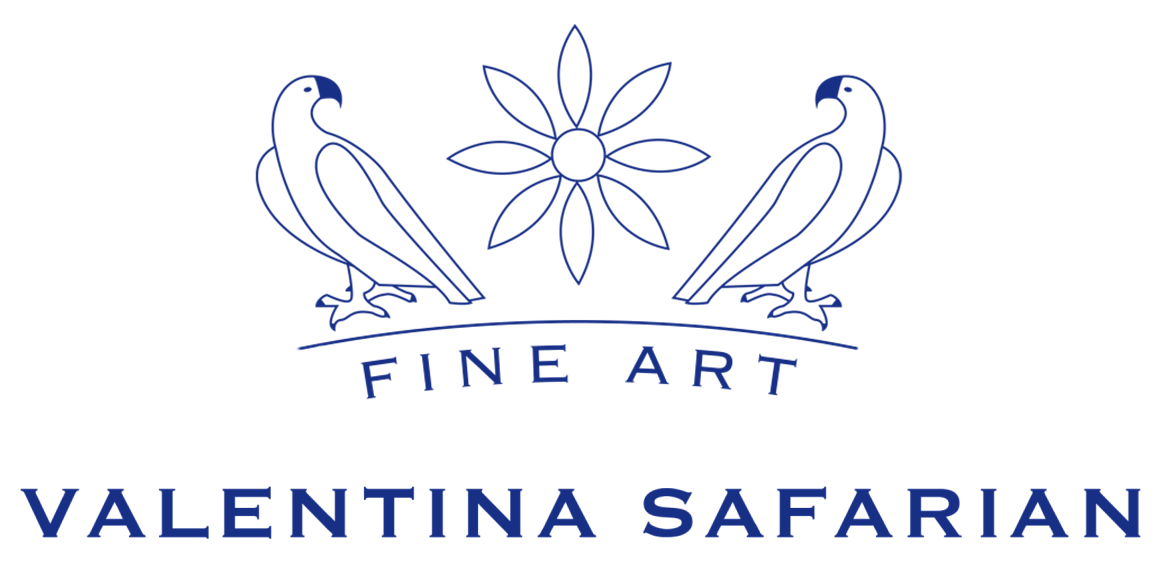Amsterdam 1868 – 1951 Hilversum
Dutch Painter
Spring Ploughing with Two Horses
Johan Frederik Cornelis Scherrewitz (Amsterdam, 18 March 1868 – Hilversum, 9 August 1951) was a Dutch painter and watercolorist best known for his atmospheric landscapes and coastal scenes, often populated with figures and animals that appear almost to merge with the land they inhabit. His work is associated with the “late flowering” of the Hague School, capturing the Dutch countryside in a manner both poetic and timeless.
Born into a family that initially envisioned a career in finance for him, Scherrewitz was the son of a stockbroker and was expected to follow in his father’s footsteps. However, as he later explained to his biographer Henri van Calker, “When my father realised I would never make a good broker, I was allowed to pursue painting and went off, armed with my art, to wander.” After early lessons with the drawing teacher Veltens, Scherrewitz studied under the acclaimed landscape painter George Poggenbeek, who further encouraged his artistic development and inspired him to capture the quiet poetry of the Dutch landscape.
In 1898, Scherrewitz moved for a period to the artist village of Laren before later settling in Hilversum. Unlike many of his contemporaries who were drawn to the polders, Scherrewitz sought out the open woodland landscapes of Brabant, the Veluwezoom, and the serene woodlands of the Lage Vuursche, as well as the windswept coastline of the North Sea. These journeys inspired many of his compositions, depicting shepherds with their flocks, fishermen on coastal shores with boats, carts drawn by horses along sandy paths, and farmers with cattle in tranquil meadows—scenes imbued with a profound sense of harmony between people and nature.
Throughout his career, Scherrewitz remained faithful to the style of the Hague School, favouring warm, autumnal tones and an intimate, serene atmosphere. His paintings convey a genuine interest in the daily lives of ordinary people while celebrating the understated beauty of the Dutch landscape.
Although interest in the Hague School declined in the Netherlands after 1914, Scherrewitz’s work found great success abroad, particularly in the United States, England, and Scotland, where demand for the timeless style of the Hague School remained strong. His paintings were exhibited at the Royal Academy in London, the Scottish Academy, and other notable venues, and were widely sought after by English and American collectors, allowing him to focus less on exhibiting within the Netherlands while maintaining an active international clientele.
Despite being highly respected among fellow artists, Scherrewitz remained relatively unknown to the broader Dutch public, a hidden gem for discerning collectors who appreciate his gentle yet powerful evocations of the landscape and rural life. His dedication to the ideals of the Hague School ensured that his canvases remained sincere, refined, and deeply connected to the land he so loved.
Johan Frederik Cornelis Scherrewitz passed away in Hilversum on 9 August 1951 at the age of eighty-three. Today, his works are held in public collections, including the Rijksmuseum Twenthe in Enschede, and in private collections across Europe and North America. They continue to resonate with collectors and admirers worldwide for their refinement, warm colours, and tranquil beauty, offering a lasting window into the timeless, pastoral Netherlands he so lovingly recorded.

